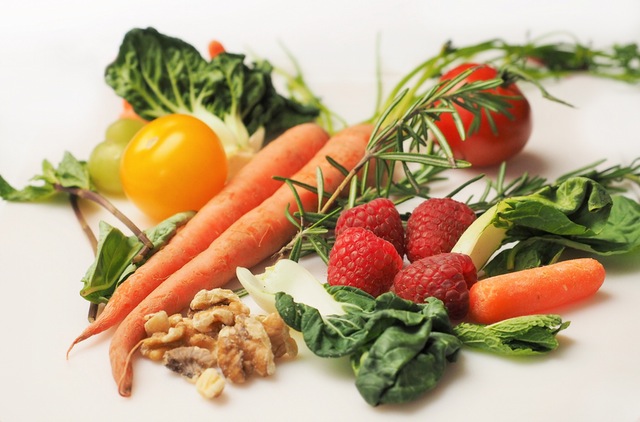By Laura Slatalla, Recent ASU Nutrition Communication Student
The average American diet is deficient in lots of vitamins and minerals, even though it’s dense in calories. Over 40% of adults aren’t getting enough of calcium, magnesium, vitamin A, D, E, and C.1 More variety needs to be added to the diet to reach adequate intakes of more vitamins and minerals. Let’s take a look at what needs to be added to our diets!

Vitamin A: There are two different places to get Vitamin A, from fruits and vegetables like carrots, tomatoes, green leafy vegetables, and pumpkin, and from animal sources like fatty fish, milk, eggs, and liver. Our bodies use Vitamin A for vision, our immune system, and our skin.
Vitamin D: Vitamin D is found in fatty fish, fortified milk, and mushrooms. Our bodies can also make it when we get some sunshine! We need to have exposed arms and legs in the sun for 15 to 30 minutes a day, so spend a little more time outside during your lunch break. Calcium absorption and homeostasis depends a great deal on Vitamin D levels, so it’s good for bone health.
Vitamin E: Vitamin E acts as an antioxidant. Some great sources are whole grains, nuts, eggs, and green leafy vegetables.
Vitamin C: Not only is Vitamin C a powerful antioxidant, but it is used in collagen synthesis. Collagen is used in our blood vessels, skin, and tendons. Citrus fruits are the obvious source of Vitamin C, but it can be found in fruits and vegetables that you wouldn’t expect, like strawberries, kiwis, kale, and cauliflower.
Calcium: Typical sources of calcium are dairy products like milk, cheese and yogurt. It’s needed for strong dense bones. It’s not just for the growing kids either. We need calcium to keep our bones from decreasing in density as we age.
Magnesium: We don’t hear enough fuss about magnesium for all that it does. It’s needed for most body functions, a healthy immune system, and preventing inflammation. Dark leafy greens, nuts, seeds, and fish are good sources.
A couple trends stand out if you look at the sources. We’re missing dark leafy greens, fish, and whole grains. Add these foods to your grocery list and try to include more of them this week. Some great ideas are spinach salads for lunch topped with nuts and a low fat dressing, fish with whole grain rice and a vegetable, fruit yogurt, and cheese for snacks.
Soon healthy foods rich in vitamins and minerals will be take over the family diet, eliminating products high in sugar, calories, and fat.
References:
- Bailey RL, Fulgoni VL 3rd, Keast DR, Dwyer JT. 2012b. Examination of vitamin intakes among US adults by dietary supplement use. J Acad Nutr Diet. 112(5):657-663.

